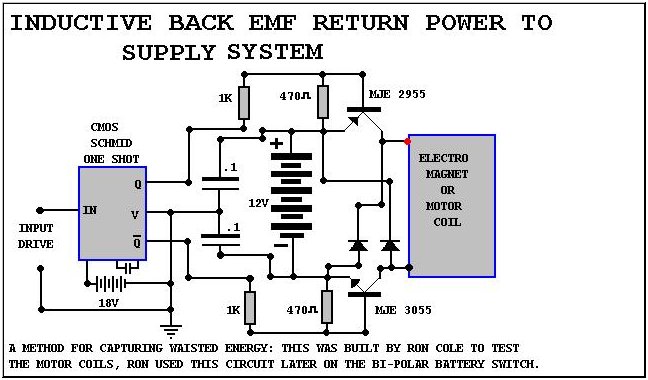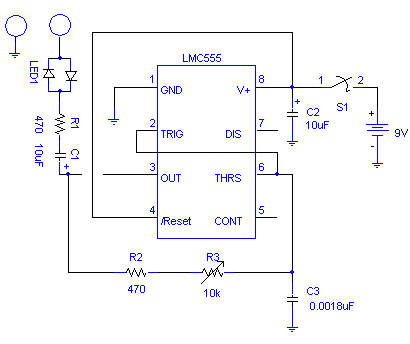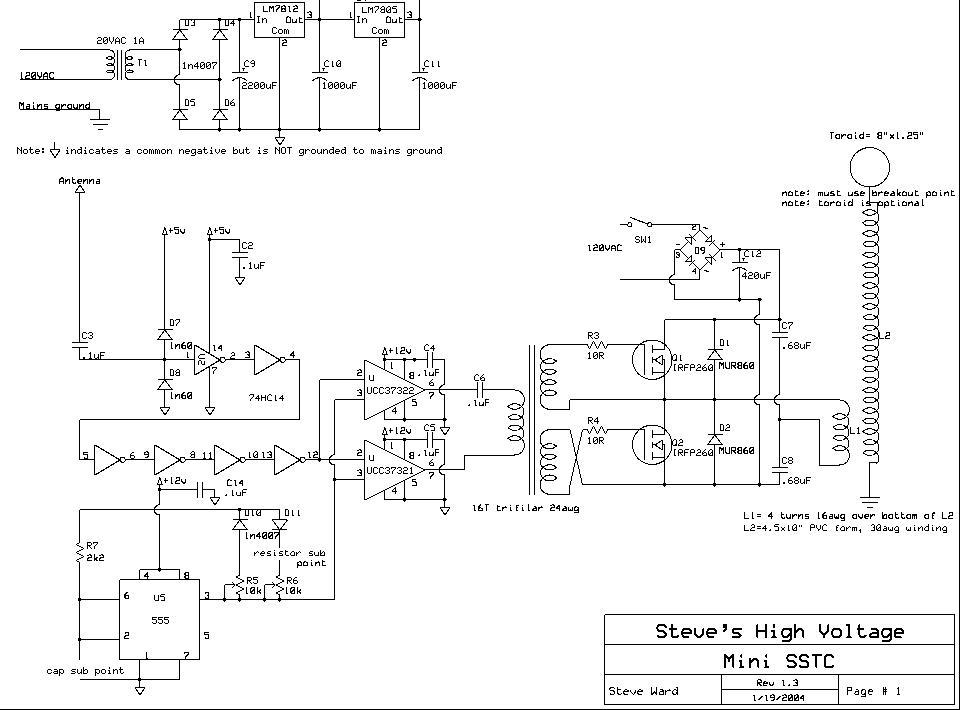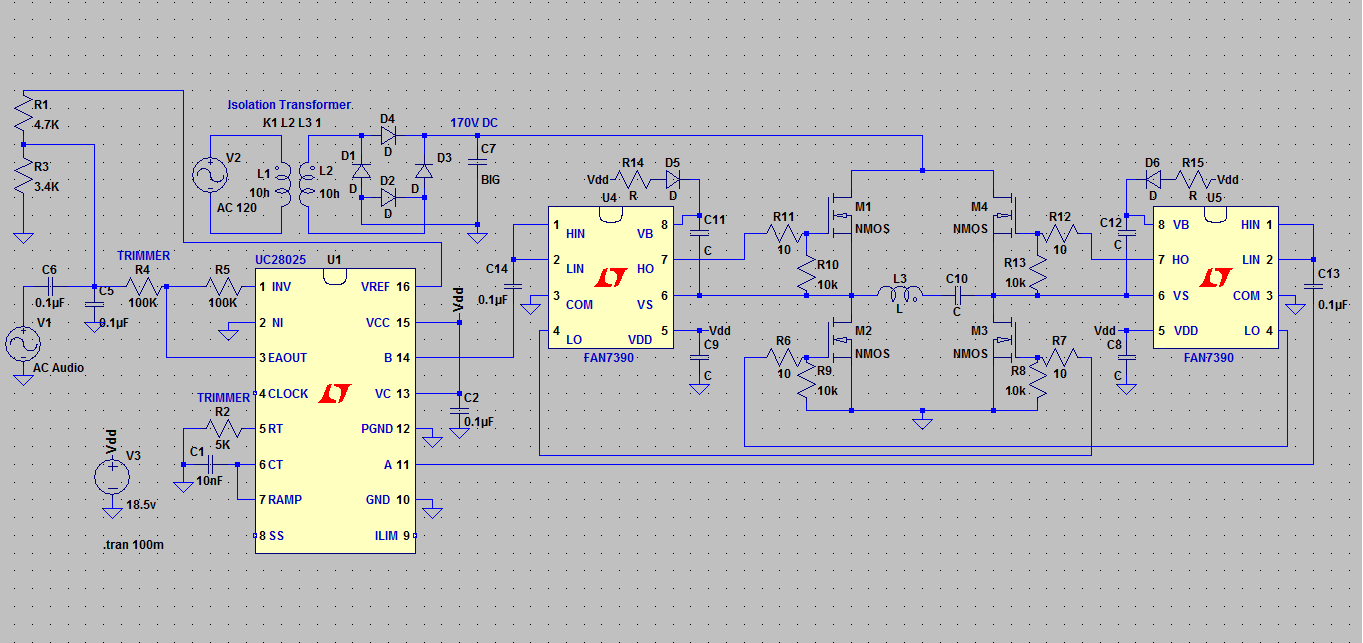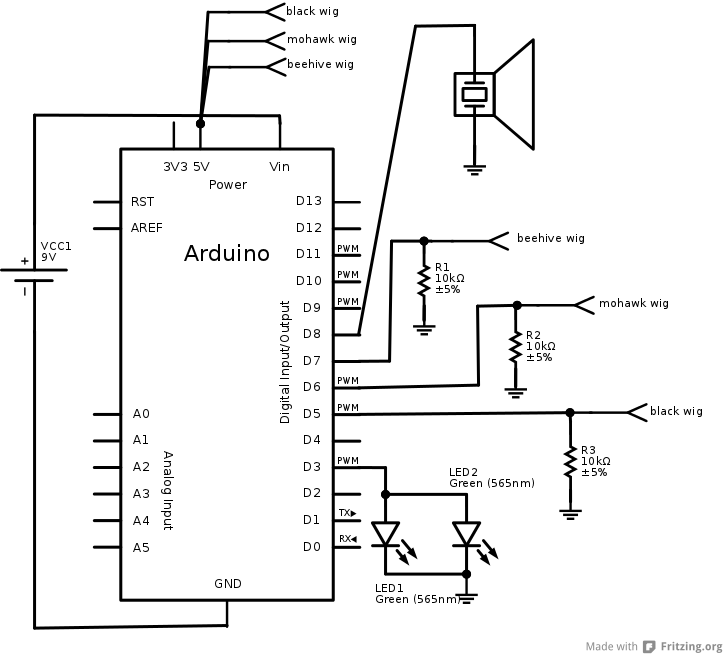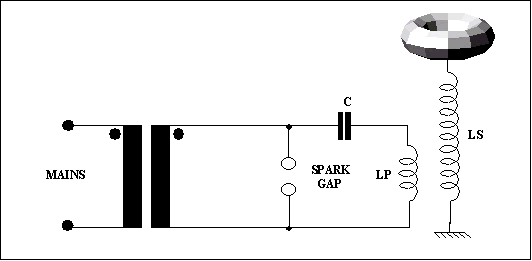
Singing Tesla Coil

A Singing Tesla Coil is being developed for a 4-H electricity project, and the initial draft of the circuitry has been completed.
The Singing Tesla Coil is an innovative device that produces high-voltage, high-frequency alternating current (AC) electricity, resulting in visual and auditory effects. The circuit typically includes several key components: a power supply, a primary coil, a secondary coil, a spark gap, and a control circuit.
The power supply is responsible for providing the necessary voltage to energize the primary coil. This is usually achieved through a transformer, which steps up the voltage to a level suitable for the operation of the Tesla Coil. The primary coil, consisting of a few turns of heavy gauge wire, creates a magnetic field when current flows through it.
The secondary coil, which has many more turns of wire, is positioned concentrically around the primary coil. The inductive coupling between the two coils allows energy transfer, resulting in a high voltage being generated in the secondary coil. The spark gap serves as a switch that allows current to flow through the primary coil intermittently, creating oscillations that are necessary for the operation of the Tesla Coil.
To achieve the "singing" effect, the circuit can be designed to modulate the frequency of the output. This is often accomplished by integrating a microcontroller or an audio input circuit that can adjust the spark gap firing rate based on the audio signal. The resulting high-frequency discharges produce audible tones, creating a musical output.
Additional components may include capacitors for energy storage, which help to enhance the efficiency and performance of the coil. Proper safety measures should be implemented, as the high voltages involved can be dangerous. It is essential to ensure adequate insulation and grounding throughout the circuit to prevent electrical hazards.
In summary, the Singing Tesla Coil circuit combines various electrical engineering principles to create a visually striking and musically engaging device, making it an exciting project for educational purposes.Hey everybody! I`m working on a Singing Tesla Coil for a 4-H electricity project and I just finished my first draft of the circuitry. I was wondering.. 🔗 External reference
The Singing Tesla Coil is an innovative device that produces high-voltage, high-frequency alternating current (AC) electricity, resulting in visual and auditory effects. The circuit typically includes several key components: a power supply, a primary coil, a secondary coil, a spark gap, and a control circuit.
The power supply is responsible for providing the necessary voltage to energize the primary coil. This is usually achieved through a transformer, which steps up the voltage to a level suitable for the operation of the Tesla Coil. The primary coil, consisting of a few turns of heavy gauge wire, creates a magnetic field when current flows through it.
The secondary coil, which has many more turns of wire, is positioned concentrically around the primary coil. The inductive coupling between the two coils allows energy transfer, resulting in a high voltage being generated in the secondary coil. The spark gap serves as a switch that allows current to flow through the primary coil intermittently, creating oscillations that are necessary for the operation of the Tesla Coil.
To achieve the "singing" effect, the circuit can be designed to modulate the frequency of the output. This is often accomplished by integrating a microcontroller or an audio input circuit that can adjust the spark gap firing rate based on the audio signal. The resulting high-frequency discharges produce audible tones, creating a musical output.
Additional components may include capacitors for energy storage, which help to enhance the efficiency and performance of the coil. Proper safety measures should be implemented, as the high voltages involved can be dangerous. It is essential to ensure adequate insulation and grounding throughout the circuit to prevent electrical hazards.
In summary, the Singing Tesla Coil circuit combines various electrical engineering principles to create a visually striking and musically engaging device, making it an exciting project for educational purposes.Hey everybody! I`m working on a Singing Tesla Coil for a 4-H electricity project and I just finished my first draft of the circuitry. I was wondering.. 🔗 External reference
